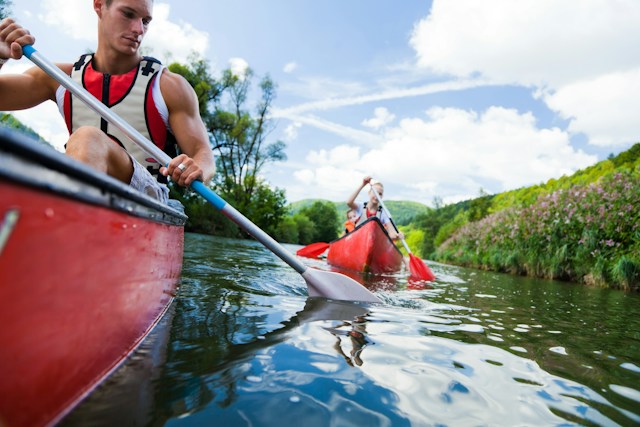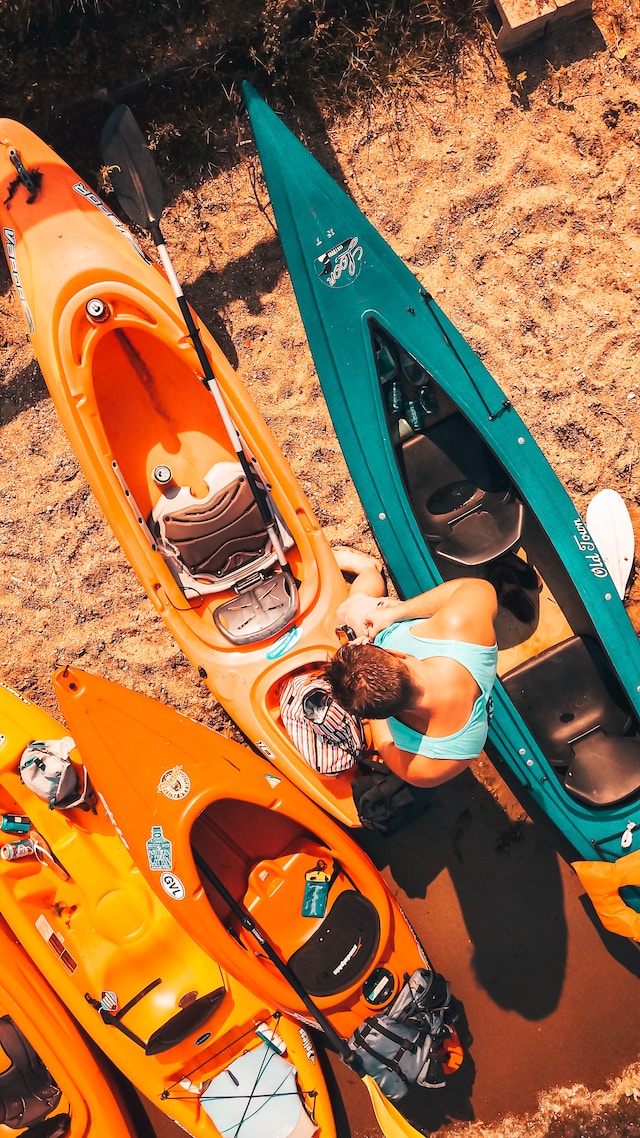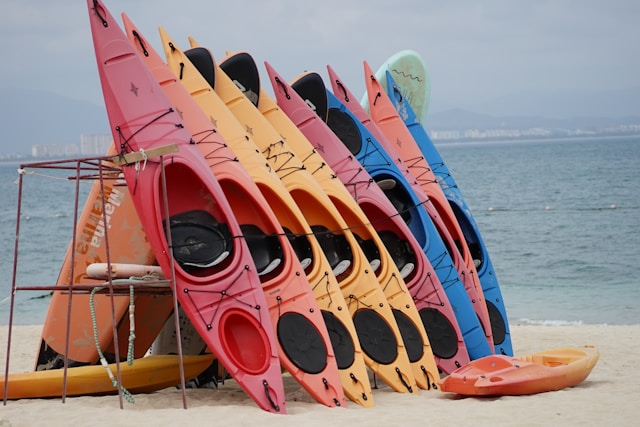8 Kayak Fishing Tips and Tricks for Success
Want to catch more fish? Try fishing from a kayak!
Here are our 8 Kayak Fishing Tips and Tricks
It’s a ton of fun, and this article will teach you how to be awesome at it.
You’ll learn how to cast your line in tricky spots, how to sneak up on fish without scaring them away, and all the best tips for becoming a super successful kayak angler. Ready to get started?
Key Takeaways:
- Learn essential kayak fishing techniques to improve your angling skills.
- Discover expert tips and tricks for maximizing your chances of success on the water.
- Uncover the secrets of advanced casting strategies for accurate and effective casting from a kayak.
- Explore the art of stealthy kayak fishing and learn how to approach fish undetected.
- Understand the importance of safety, kayak selection, and proper gear for a successful kayak fishing experience.
1. Beginning Your Kayak Fishing Journey: Safety First
Okay, before you head out with your fishing rod in your kayak, let’s talk safety. It’s super important to dress for the water, not just the weather.
Even if it’s warm out, the water might be cold, and you could end up taking an unexpected swim!

Understanding the ‘Dress to Swim’ Philosophy
The ‘Dress to Swim’ rule means wearing the right clothes for being in the water. Even if you don’t plan to go swimming, accidents can happen on a kayak!
Here’s what to wear:
- Clothes that dry quickly and won’t feel heavy if they get wet.
- Layers so you can add or take off clothes if the weather changes.
- A lifejacket! Always wear a lifejacket that fits you properly.
This way, you’ll be ready for anything, and safe on the water.
Securing Your Gear: Rigging to Flip
Imagine your kayak flipping. You don’t want to lose all your fishing stuff, right? So, we need to tie it down!
Here’s how:
- Use leashes: Think of them like doggie leashes but for your fishing rods and tackle box. This way, even if they fall out, they’re still attached to your kayak.
- Special bags: There are bags made to float, even if they’re full of stuff. Toss important things in there for extra safety.
This way, if things get a little wild out there, your gear isn’t going for an unexpected swim!

Finding Your Centerline for Stability
Kayaks can be a little wobbly, especially when you’re focused on fishing.
The trick to staying steady is all about finding your balance.
Think of an invisible line running straight down the middle of your kayak, from the front all the way to the back. Try to keep your head in line with that center point. It’s like sitting dead center on a seesaw – keeps everything nice and balanced!
By prioritizing safety, understanding the ‘Dress to Swim’ philosophy, securing your gear, and finding your centerline for stability, you’ll be well on your way to a safe and enjoyable kayak fishing journey.
2. Kayak Selection: Finding Your Ideal Fishing Vessel
Testing Different Kayak Models Before Purchase
Picking the right kayak for fishing is super important! It’s like buying shoes – you gotta try them on first.
Here’s why you should test out a few different kayaks before buying one:
- Wobble factor: Some kayaks are steadier than others. You want one that feels good to sit in, even when you’re fishing.
- Turning power: You need a kayak that turns easily, so you can reach those super secret fishing spots.
- Storage space: Where are you gonna put all your fishing gear? Make sure your kayak has enough room and that you can reach your stuff easily.
Think of it like a mini adventure before the real fishing adventure starts!
Considerations for Length and Stability in Fishing Kayaks
When picking a fishing kayak, think about how long it is and how steady it feels.
- Long kayaks (like 12-14 feet): These are steadier on the water. Great if you’re new to kayaking and don’t want to worry about tipping over.
- Short kayaks (like 10-12 feet): These are easier to turn and get around in tight spots. Perfect if you’ll be fishing in small rivers or creeks with lots of twists and turns. Also, they’re easier to carry around!
The best choice for you depends on a few things:
- Are you a beginner? Longer kayaks might feel better to start.
- How tall/big are you? Size matters for kayak comfort!
- Where will you fish? Open lakes need steadier kayaks, little rivers need ones that turn easily.
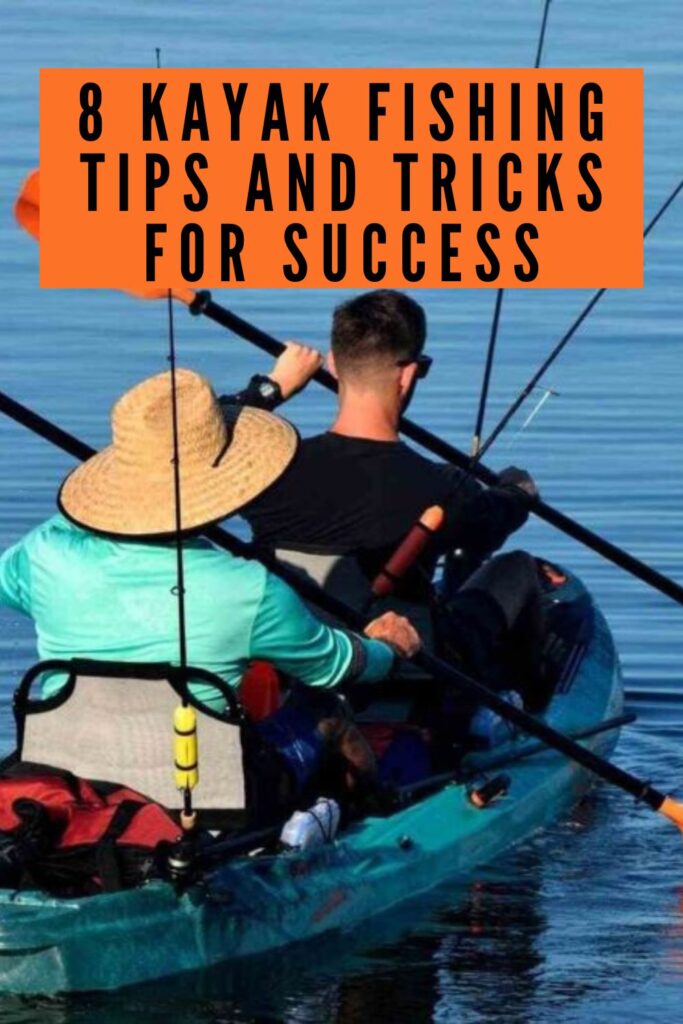
3. Accessorizing Your Kayak for Enhanced Fishing Experience
Okay, you’ve got your kayak, now let’s make it awesome for fishing!
Think of these accessories like special tools to help you catch more fish and have a way better time on the water.
Here are a few must-haves:
Choosing the Right Paddle for Maximum Efficiency
Paddling is like pedaling a bike – a good paddle makes it smoother and less tiring. Here’s what to consider when choosing one:
- Size matters: Longer paddles give you more power, but shorter ones are easier to turn with. Think about the kind of fishing you’ll be doing.
- What it’s made of: You want something light but strong. Fancy paddles are often made of special stuff that won’t tire out your arms as fast.
- Think about the shape: Some paddles are made for scooping lots of water, others for slicing through it smoothly. Ask someone at a kayak shop – they can help!
Importance of a Comfortable and Functional PFD
Lifejackets aren’t just a rule, they’re seriously important for kayak fishing! Here’s how to find one you won’t hate wearing:
- It’s gotta fit right: Not too tight, not too loose. You should be able to move your arms easily for paddling.
- Pockets are awesome: They’re perfect for stashing a whistle (super important for emergencies) or a tiny flashlight.
- Comfort is key: You won’t wear it if it’s uncomfortable! Try a few on until you find one that feels good.
Think of it as your fishing buddy that’s always got your back. 😉
Essential Kayak Fishing Gear Checklist
The Basics – Gotta Have These!
- Fishing rod (or a few!)
- Tackle box full of your favorite lures
- Net to scoop up your catch
- First-aid kit (just in case!)
- Waterproof phone case (for emergencies and awesome fish pics)
Extra Stuff That Makes It Better:
- Sunscreen and bug spray (nobody likes a sunburn!)
- Hat and sunglasses
- Snacks and water (fishing makes you hungry)
- Dry bag for clothes or anything you REALLY don’t want wet
- Special fishing tools you love (pliers, special lure holder, etc.)
Important Note: Always wear your lifejacket, and make sure someone knows where you’re going and when you’ll be back!
You can even print this checklist and keep it with your fishing gear so you never forget the essentials.
You got it! Here’s a more casual way to wrap up the importance of accessories:
The right gear makes kayak fishing SO much better. A good paddle helps you get around faster, a comfy lifejacket makes you feel safe, and having all your fishing stuff organized means more time catching fish!
It’s worth spending a little time choosing the stuff that works for you. Then you can just focus on having fun out on the water.
4. The Art of Kayak Launching and Loading Techniques
Absolutely! Here’s a simplified way to get that point across:
Picture this: you get all your awesome fishing gear to the water… and then drop your kayak trying to get it in! No way. Here’s how to load and unload it like a pro:
- Learn the right way: There are special ways to put a kayak in the water and take it out. These keep your kayak from getting scratched and help you avoid spills.
- Ask for help: If you’re new or your kayak is big, don’t be afraid to ask a buddy for help. Way better than hurting yourself or your gear!
Getting this down means your fishing trip starts off smooth (and dry!).

Innovative Solutions for Transporting Your Kayak
Transporting your kayak to and from your fishing destination can be a logistical challenge, but thankfully, there are innovative solutions available to simplify the process.
Explore these options to find the one that best suits your needs:
- Roof Racks: Installing roof racks on your vehicle provides a secure and convenient way to transport your kayak. Be sure to follow the manufacturer’s instructions and properly secure your kayak with straps or tie-downs.
- Kayak Trailer: If you frequently transport multiple kayaks or have limited space on your vehicle, a kayak trailer can be a great investment. These trailers are designed specifically for hauling kayaks and offer ease of use and ample storage options.
- Kayak Loader Systems: For those who struggle with lifting and loading their kayak onto their vehicle, kayak loader systems can provide a practical solution. These systems utilize mechanical or hydraulic mechanisms to assist in lifting and lowering your kayak, making transportation much easier.
By implementing these kayak launching and loading techniques, as well as exploring innovative transportation solutions, you can ensure a safe and hassle-free journey to your fishing destination.
5. Advanced Casting and Retrieving Strategies from a Kayak
If you’re fishing from a kayak, learning some extra casting tricks will seriously help you catch more fish. By getting really good at your aim and using some special techniques, you’ll put your lure right where the fish are biting.
Let’s talk about two important things: how to use the water’s current to your advantage, figuring out the best place to cast from, and some special ways to target bass from your kayak.
Mastering the Drift and Positioning for Optimal Casting
One of the best tricks kayak anglers use is called ‘drift fishing’. This means letting the wind or current gently move your kayak while you focus on dropping your lure in the perfect spot.
The key to drift fishing is figuring out how to position your kayak so you drift in the right direction.
Sometimes, you might use a small anchor to hold your position, slowly letting out more line to control the drift. This keeps you quiet so you don’t spook the fish. You’ll need to adjust the anchor sometimes to stay in the best casting spot.
It’s also super important to keep your kayak facing the right way compared to the wind or current. Being sideways to the flow makes your lure look more natural, and that means more fish will bite!
Don’t forget, you might need to move around a little as you drift to keep the best angle for casting.
Bass Fishing: Angling for the Thrill
Kayak fishing for bass is a total blast! But you’ve got to be a little sneaky to get these fish to bite.
The trick is to make your lure look like something bass want to eat. Here’s a few ideas to try:
- Buzz it on top: Use noisy lures that splash on the surface. This tricks bass into thinking a bug or little fish is in trouble.
- Squiggle through the weeds: Soft plastic lures that look like worms or crawdads are perfect for wiggling through underwater plants where bass like to hide.
- Fake an injury: Crankbaits and jerkbaits mimic hurt baitfish. Bass love an easy meal!
- Sneak up on ’em: Flip your lure right next to fallen trees or docks. Big bass like to hang out in the shadows and ambush their prey.
Don’t be afraid to try different sizes and colors, sometimes bass can be picky! Also, how the bass are acting can change from day to day or even within one fishing trip.
6. Kayak Fishing Tips and Tricks for Success
Looking to up your game in kayak fishing? We’ve got you covered with some expert advice and strategies to enhance your angling skills.
Whether you’re a beginner or an experienced angler, these tips and tricks will help you maximize your success on the water.
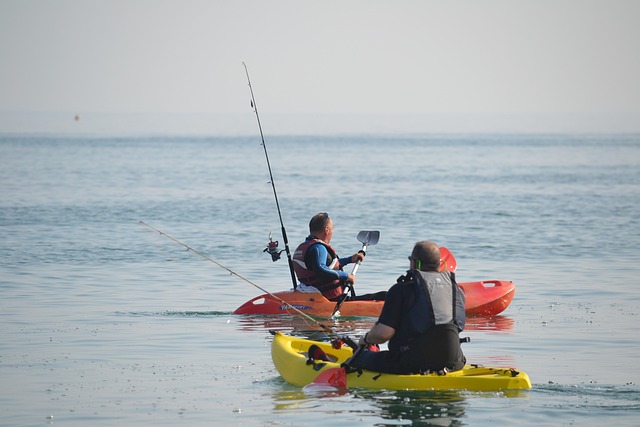
- Mastering Different Fishing Techniques: Experiment with various techniques like trolling, jigging, and topwater fishing to find what works best for your target species. Consider the behavior and preferences of the fish you’re targeting when selecting your techniques.
- Bait and Lure Selection: Pay attention to the water conditions, time of year, and target species when choosing your bait and lures. Research the most effective options and try different colors, sizes, and styles to entice bites.
- Navigation Know-How: Familiarize yourself with the waterways you plan to fish. Study maps, use GPS or navigation apps, and pay attention to landmarks to avoid getting lost and discover productive fishing spots.
- Timing is Everything: Timing plays a crucial role in successful kayak fishing. Pay attention to feeding patterns, tides, and other factors that affect fish behavior. Plan your fishing trips accordingly to increase your chances of catching fish.
- Stay Stealthy: Practice stealth when approaching fish. Keep noise to a minimum, avoid making sudden movements, and blend into the surroundings. This will help you get closer to the fish without spooking them.
- Adapt to Changing Conditions: Be prepared to adapt your fishing techniques and strategies as conditions change. Weather, water clarity, and fish behavior can vary, so stay flexible and adjust your approach accordingly.
- Learn from Others: Join kayak fishing forums, social media groups, and local clubs to connect with other anglers and learn from their experiences. Share your own tips and tricks as well to contribute to the community.
| Tips and Tricks | Benefits |
|---|---|
| Master different fishing techniques | Increased chances of catching fish |
| Select the right bait and lures | Attract more bites from target species |
| Navigate effectively | Discover prime fishing spots and avoid getting lost |
| Time your trips strategically | Maximize opportunities when fish are most active |
| Practice stealthy approaches | Get closer to fish without alarming them |
| Adapt to changing conditions | Increase success rate in different environments |
| Engage with the kayak fishing community | Gain valuable insights and learn from experienced anglers |
7. Stealth in Kayak Fishing: Secret Techniques Revealed
Think like a ninja when you’re kayak fishing! The quieter you are, the more fish you’ll catch. Here are some sneaky ways to get close to fish without them noticing, plus the best lures to keep your secret:
- Paddle with purpose: Learn to move your kayak smoothly and quietly.
- Pick the perfect lure: It’s not just about how it looks, but also how it moves in the water. Smaller, natural-looking lures are less likely to scare off fish.
Let’s get into the details of these super stealthy techniques
Utilizing Paddling Skills to Approach Fish Undetected
Paddling is the number one way you can spook a fish. Think slow and smooth – no jerky moves or big splashes! Here’s what to focus on:
- Gentle strokes: Don’t slap the water with your paddle. Practice smooth, quiet movements.
- Practice makes perfect: Quiet paddling takes time to master. The more you do it, the easier it gets, and the more fish you’ll catch!
Optimal Bait and Lure Selection for Kayak Anglers
Picking the right lure is like the secret ingredient to catching fish without them knowing you’re there! Here’s the trick:
- Blend in: Choose lures that look like the bugs, little fish, or critters that naturally live in the water you’re fishing.
- Less is more: Smaller, quieter lures are better for sneaking up on fish. Soft plastics, jerkbaits, and other sneaky lures will be your best friends.
- Test it out! What works one day might not the next, so experiment until you find your secret weapon!
8. Maximizing Success with Kayak Fishing Techniques
Kayak fishing is all about using the right tricks to get the most out of your time on the water. Whether you’re just starting out or have been at it for a while, knowing some special techniques makes a huge difference.
Let’s talk about two important things: how to get your kayak moving, and what’s special about fishing from an inflatable kayak.
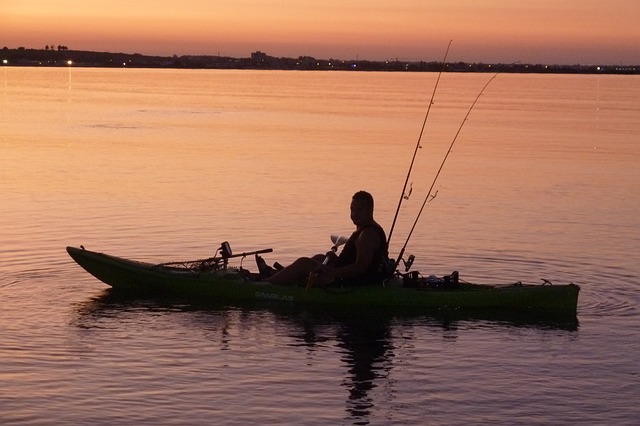
Pedal vs. Paddle: Choosing Your Propulsion System
The first big question in kayak fishing: do you want to paddle or pedal? Here’s how to decide:
Paddle kayaks:
- Classic and easy to use.
- Great for getting into tight spots and shallow water.
- Lighter to carry and don’t need as much fixing if something breaks.
Pedal kayaks:
- Let you use your legs, so your hands are free for fishing.
- Help you cover more water, even if it’s windy.
Think about this: Where will you fish? Do you want a simple kayak, or one with more features? There’s no wrong answer, just what’s right for you!
Navigating and Fishing Inflatable Kayaks
Inflatable kayaks are awesome for fishing! Here’s why:
- Easy to take anywhere: They pack down small so you can throw one in your car, no fancy roof rack needed.
- Super stable: Perfect if you’re nervous on the water, and great for fishing in spots where you might need to stand up.
Important stuff to know:
- Pump it up right: Make sure it’s fully inflated before you hit the water – check the instructions that came with your kayak.
- Watch out for sharp stuff: Keep an eye out for pointy rocks or fishing hooks that could cause a leak.
- Stay steady: If the water’s choppy, a small anchor or something called an ‘outrigger’ can keep you from tipping.
- Pack smart: Inflatable kayaks sometimes have less storage space, so bring a deck bag or crate to keep your gear organized.
Kayak fishing is all about finding what works for you. Give these tips a try and you’ll love hitting the water in your inflatable!
Conclusion
You’re ready to get out there and catch some fish from your kayak! With all these tips and tricks, you’re going to have a blast exploring and finding your favorite fishing spots. Here’s the most important stuff to remember:
- Safety first: Always wear your PFD (life jacket!) and dress like you might take an unexpected swim. Secure your gear so you don’t lose anything important.
- Find your balance: Getting comfortable in your kayak makes everything easier. Practice finding that center point so you feel stable.
- The right gear makes a difference: Test out kayaks to find one you love, and get a good paddle! A checklist helps you remember everything you need.
- Level up your skills: Keep practicing casting, being sneaky, and try out different kinds of kayaks. The more you do, the better you’ll get!
Now get out there and have some fun on the water!

